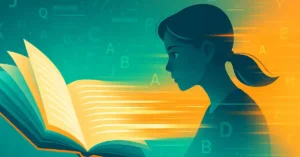Introduction
In the previous section, we learned how to remember the year of a historical event. That’s usually great for early history, where the dates aren’t precisely known. Now we’ll look at how to memorize days and months because as we get into modern history, you’ll probably be required to remember those, too.
This technique will combine elements from the major system (click here to learn more about the major system) and a series of images representing each month. While it might seem tedious to memorize a chart of months so that we can memorize dates, I promise you that the payoff is significant. Remembering historical dates will be much easier after you have this system in place.
Step One
First, we need to come up with our chart. Each image should be relevant and meaningful to you. The list below is one that works for me. You can change any of the pictures if you know it will work better for you.
- January = A snowy field
- February = Cupid / a cherub
- March = A soldier marching
- April = A pill
- May = Flowers
- June = A Junebug (or any bug!)
- July = Fireworks
- August = A gust of wind blowing something (represented by the day of the month) over
- September = A school
- October = A witch
- November = Turkey
- December = A Christmas Tree
Again, this list works for me. If you can substitute better mental images, then you should.
Step Two
For the day of the month, we will use the major system. Here is our major system chart:
0 = s, z, soft c
1 = t, d
2 = n
3 = m
4 = r
5 = l
6 = sh, ch
7 = k, hard c
8 = f, v
9 = p, b
As we come across a day to remember, we encode the day into a word. For example, if the event happened on the 19th, our corresponding sounds are t, p. This is fun – imagine everything you can wrap in toilet paper to remember a date!
Step Three
Create an image for the year using the major system. If you need a refresher on this part, look at the historical dates tutorial here.
In this example, I will use 1967. I will break down 967 like this:
9 = p
6 = ch
7 – k

Step Four
Combine all the images to form a date. Add a mental picture of the thing you want to remember. I want to remember the UK release date for the Beatles’ Magical Mystery Tour. Here is what I have:
Begin with a turkey walking around. Wrap the turkey in toilet paper. There is a stream of pee splashing on the turkey’s head. Following the pee, you find a chick(en) on a ladder. The chicken is bathed in a rainbow that leads to the album cover for the Magical Mystery Tour.
My order is specific. If you prefer a different order, decide on what works best for you — and stick with it! The order you choose isn’t that important, but consistency is. When I started this journey, I learned to remember years tied to events first. Because of that, the order I use is month, day, year, then event.
Decoding the Message
Working from our image to our date, we can decode our date.
Turkey = November
Toilet paper = 19
Pee(ing) chick = (1)967
The album cover of the Magical Mystery Tour doesn’t require any further decoding.
The UK release date of the Magical Mystery Tour album was November 19, 1967.
Conclusion
It might seem like a bit of work to remember the historical date this way. Still, it is far more effective than sitting there, re-reading the date repeatedly, hoping that it will just stick at some point. Once the date is encoded, it is much easier to recall the images.
All of these tutorials work together, so it doesn’t matter if you are trying to memorize history, computer science, math, or English. The principles are the same and worth the time because, eventually, it will save you time. It truly doesn’t take long before you memorize everything faster and better!
Master Speed Reading and Memory
Unlock the secrets of speed reading and memory mastery. This practical guide helps you boost your reading speed, sharpen recall, and learn smarter—starting today.







